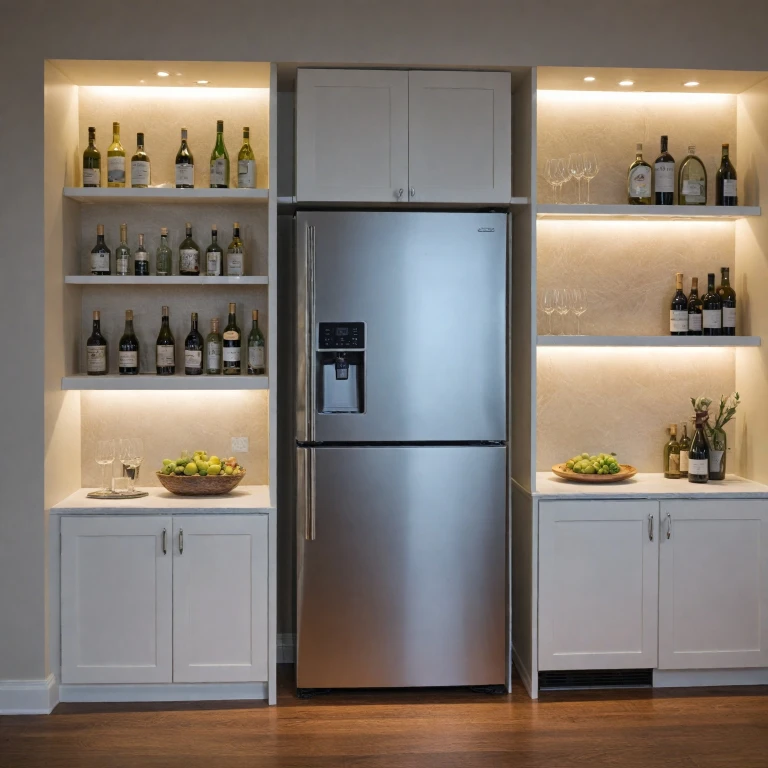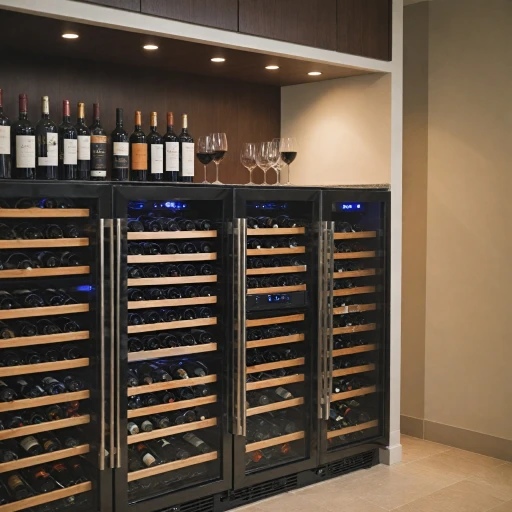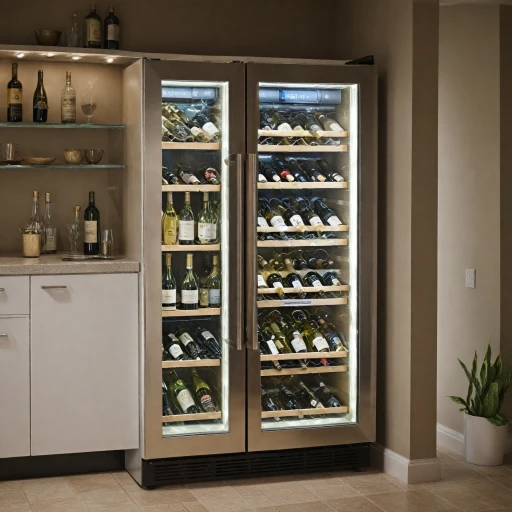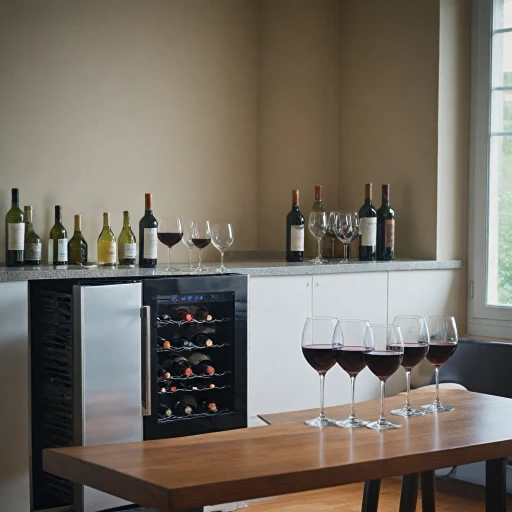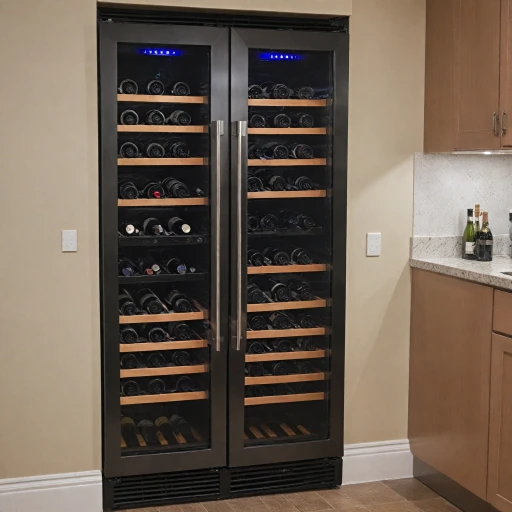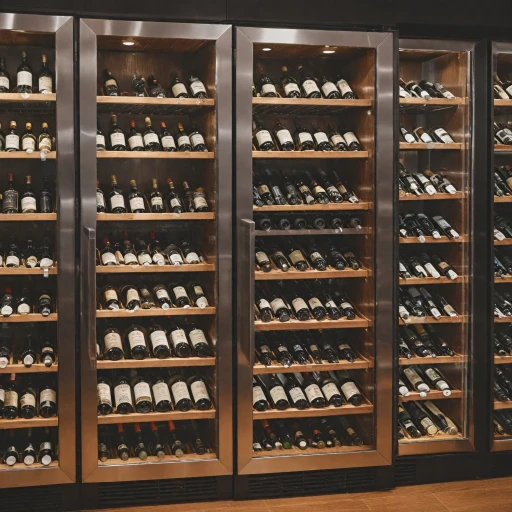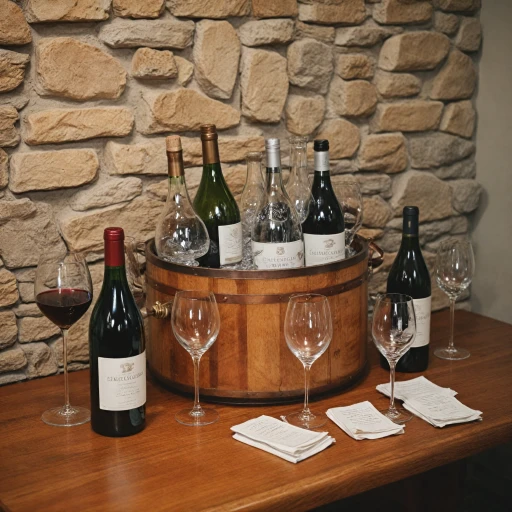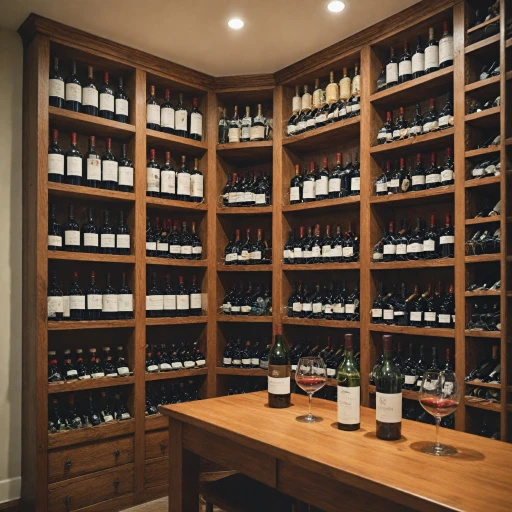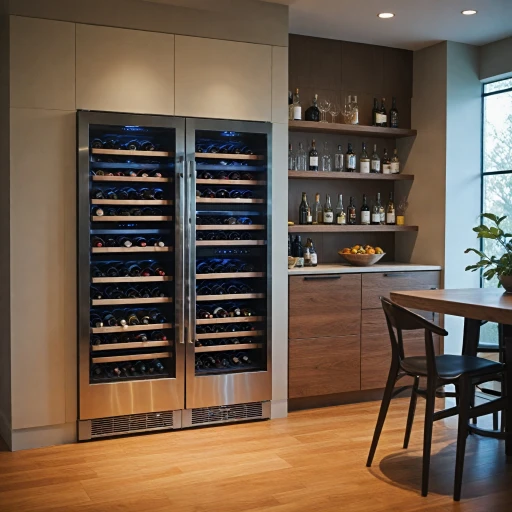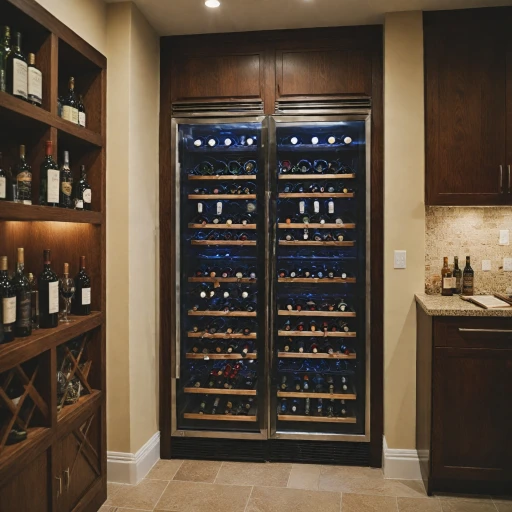
Understanding the Importance of Temperature Control
The Importance of Controlling Temperature
Understanding the importance of temperature control in wine storage is crucial for any wine enthusiast. Temperature can significantly affect the taste, aroma, and aging process of both white and red wines. Storing your white wines at the correct temperature preserves their delicate flavors and ensures that they are served at their best. While it might be tempting to store wine at room temperature or in any available refrigerator space, white wine requires more precise conditions. In fact, incorrect storage temperature can lead to premature aging or alteration of the wine's intended taste profile. This makes understanding temperature control an essential part of optimal wine storage. Dual-zone wine coolers are a popular choice among oenophiles, allowing for two separate temperature zones to accommodate both red and white wines. A cooler temperature setting is recommended for white wines, ensuring they are ideally preserved until they are ready to be served. Moreover, refrigerators specifically designed as wine fridges provide stability and accuracy in maintaining the perfect environment for wine bottles. A specialized wine fridge ensures more consistent temperature control compared to a standard refrigerator, supporting best practices in wine storage. For anyone serious about wine, investing in proper storage methods, such as a dedicated wine fridge, can significantly impact the wine's quality. Understanding the art of wine storage further illuminates the intricacies involved in maintaining the right environment for your prized collection.Ideal Temperature Range for White Wine
Determining the Perfect Chill for Your White Wines
For wine enthusiasts, maintaining the optimal storage temperature is a fundamental aspect of preserving the palate's delicate flavors and bouquet. When it comes to white wines, setting the precise temperature is crucial for enhancing their taste sensations. White wines generally thrive in a slightly cooler zone than their red counterparts. This means it is vital to ensure they are stored at a specific cooler temperature for the best outcome. The ideal temperature for storing most white wines lies between 45°F to 50°F, which helps in maintaining the subtle flavors and crispness that these wines are cherished for. Why is this range considered the best? Well, storing your bottles at these temperatures promotes stability and preserves the quality of your wine. These degrees in Fahrenheit prevent the wine from becoming excessively acidic or losing its refreshing characteristics, which would otherwise occur if stored at room temperature or cooled below the recommended range. Keeping your white wines within these temperatures ensures that the aromas remain intact and the flavor profile is preserved perfectly. Plus, serving white wine directly from a wine fridge will elevate the tasting experience, allowing the freshness and complexity of the wine to shine effortlessly through each sip. Wine refrigerators offer a precise way to set the storage temperature, ensuring your white wine collection remains in top condition. Dual zone wine coolers can be particularly beneficial as they can store both red and white wines at their respective temperatures, preserving the unique attributes of each variety. While understanding the importance of storage temperature and choosing the right wine fridge are pivotal steps for any wine lover, ensure your wine refrigerator is calibrated correctly to prevent any fluctuations that might affect your wine stored. For further insights on how temperature affects white wines, you might find it intriguing to read more on how wine chillers optimize these conditions for superior quality results in your beverages by exploring the allure of quartz wine.Impact of Incorrect Temperature on White Wine
The Detrimental Impact of Incorrect Storage Temperatures
Storing white wine at inappropriate temperatures can significantly affect its quality and overall taste. White wines require a cooler environment than reds. Ideally, white wines should be kept between 45-50 degrees Fahrenheit. When the storage temperature is too high, the wine can age prematurely, leading to muted flavors and a less vibrant aroma. Over time, this might even lead to an unpleasant, cooked taste. On the other hand, if stored below the recommended level, white wine may lose its subtle nuances and may even lead to the formation of tartrate crystals, which, while harmless, can be visually unappealing.
Inconsistent temperatures can also pose challenges for wine storage. Fluctuating temperatures cause the wine to expand and contract, potentially compromising the bottle's seal. This could allow oxygen to seep in, which accelerates the oxidation process. As a result, the wine stored may develop off-flavors, detracting from its intended profile.
For wine enthusiasts aiming to preserve the quality and character of their collection, understanding the importance of a controlled storage environment is essential. Investing in a wine fridge that allows precise control over the storage temperature will ensure your wines are always ready to be served at their best.
Choosing the Right Wine Fridge
Selecting the Best Wine Storage Option
In the pursuit of preserving the delicate balance of white wines, investing in a wine fridge is a prudent decision. The purpose of a wine refrigerator is to maintain an ideal storage temperature, significantly enhancing the longevity and quality of your wine collection. This appliance offers a dedicated environment that mimics the conditions of traditional wine cellars, where temperature consistency is crucial.
When selecting a fridge for storing your whites, consider the following features:
- Cooling Zones: A dual zone wine cooler is beneficial, especially if you enjoy both white and red wines. Each zone allows for different temperature settings, catering to the specific needs of each bottle type.
- Thermal Controls: Opt for a fridge with precise thermostat control to ensure your white wines are stored within the optimal range of 45-50 degrees Fahrenheit.
- Capacity and Fit: Evaluate the fridge's size to match both the number and size of your bottles. Do you mostly have standard bottles or do you also have a few larger format ones? Your wine fridge should accommodate your current inventory and allow for future purchases.
Keeping white wines at their ideal storage temperature prevents them from losing their unique profile. By selecting a wine refrigerator with these features, you ensure your wines are served at their best, whether you are enjoying a refreshing glass during a casual evening or entertaining guests.
Tips for Monitoring and Adjusting Fridge Temperature
Monitoring Fridge Temperature for Perfect Wine Storage
Maintaining the right temperature is essential for optimal white wine storage. With the correct temperature, you can ensure that the wine retains its intended flavor and quality. Here's how to effectively monitor and adjust your wine fridge’s temperature:
- Invest in a Reliable Thermometer: Even if your wine fridge has a built-in thermometer, it's wise to invest in a separate one to periodically cross-check the cooler temperature. This helps ensure accuracy and consistency when you store white wines or reds.
- Regular Adjustments: Make it a habit to check the temperature often, especially after significant weather changes. Fridges can be affected by external temperatures, altering the internal environment where your wine bottles are stored.
- Optimal Temperature Zones: If you own a dual zone wine fridge, ensure each zone is set to the appropriate temperatures for the type of wine being stored. White wine is best kept cooler than red wines, yet both require specific settings for ultimate wine serving temperature.
- Avoid Overcrowding: Adequate airflow is crucial for maintaining consistent temperatures. Ensure you do not overcrowd the fridge, as this can lead to hot spots or even spoilage due to increased temperature variability.
- Be Mindful of Location: Place your wine cooler in a location away from direct sunlight and heat sources. Even if a fridge has an insulation layer, external factors can still affect how wine is stored within.
By actively monitoring and adjusting your wine fridge, you'll ensure your white wine is always perfectly chilled and ready for serving at its best.
